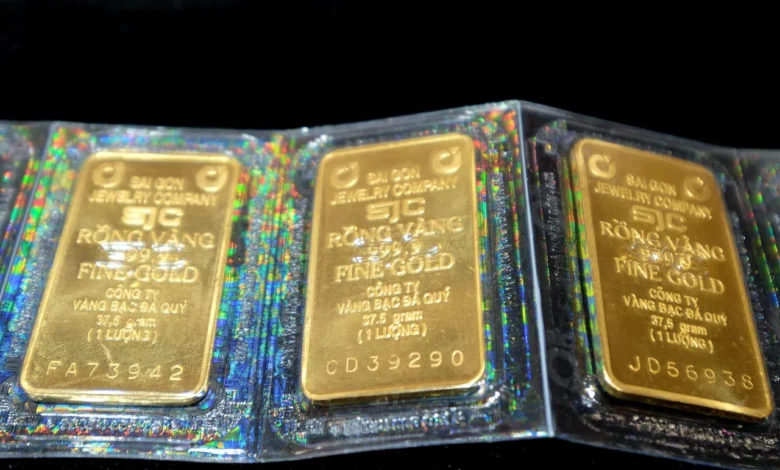Why has gold’s inverse relationship with the US dollar reversed?

THE price of gold has long had a close relationship with real interest rates of the US dollar: higher real interest rates in the United States – which usually mean a stronger greenback – lead to lower gold prices, and vice versa.
However, this correlation seems to have broken. Over the past four years, gold prices have been rising, despite the dollar remaining relatively stable. One of the driving forces behind this change is the gold-buying spree by central banks.
The war in Ukraine has fuelled buying, with US sanctions against Russia, including the freezing of its dollar assets, prompting more countries to reduce their dollar reserves and increase their gold holdings, resulting in a gradual global trend of de-dollarisation.
This year, the relationship has evolved further, with gold and the dollar starting to move in the same direction. So, what is causing gold to continue trending upward despite a strong dollar and its high interest rates?
First, it should be noted that the long-term viability of rising gold prices hinges on the continuation of an excess fiscal expansion in the US. The practice of monetising fiscal deficits – where a central bank uses measures, such as buying government bonds, to finance government spending – would undermine long-term dollar credit.
Factoring in Trump
With that in mind, in my view, the price of gold has surged recently due to the increased probability of Donald Trump’s re-election to the White House. The price rise picked up pace in February, as the former president’s approval rating climbed in January from 40 per cent to 45 per cent, surpassing his counterpart Joe Biden.
GET BT IN YOUR INBOX DAILY

Start and end each day with the latest news stories and analyses delivered straight to your inbox.
But given that President Biden has also implemented large-scale fiscal stimulus policies during his term, why would Trump’s re-election imply a greater fiscal expansion? The answer lies in the potential constraints they face and their personal styles.
Should Trump win, it is believed that he will face fewer constraints at the beginning of his term compared with a Biden re-election.
According to forecasts by international institutions, if Trump wins, there is a 60 per cent chance that the Republican Party will control both chambers of Congress. Whereas, if Biden is re-elected, there is an 80 per cent chance that he will face a divided Congress.
In addition, Trump shows stronger populist tendencies than Biden, suggesting that he is more likely to push for economic growth through aggressive fiscal expansion, aligning with his supporters’ demands.
Currently, the chances of Trump being re-elected are not low. With inflation showing signs of coming back, the US economy could shift from inflation to stagflation, and if that happens, it would further weaken Biden’s approval, increasing Trump’s chances of victory.
The main reason for a rise in the price of gold is usually the depreciation of the dollar caused by an increase in US government debt. That said, why hasn’t the dollar weakened?
My understanding is that the increasing price of gold is a result of the long-term negative impacts brought about by US fiscal expansion on the dollar, while the strong dollar reflects the fact that the US economy outperforms global peers, which is part of the short-term benefits of its expansionary fiscal policy.
Correlation remains
In my view, the correlation between gold and real interest rates in the US remains. There are two factors affecting real interest rates: nominal interest rates reflected by US Treasury bond yields, and inflation expectations represented by changes in crude oil prices.
In times of low inflation, inflation expectations are relatively stable, and the changes in real and nominal interest rates are basically in tandem. In such a circumstance, the gold pricing anchor is US Treasury bonds.
Conversely, when inflation is high, expectations have a greater impact on real interest rates, and as crude oil is a major factor influencing inflation levels, accordingly, it also becomes an anchor for gold pricing.
In sum, as long as the US fiscal deficit remains high, the upward trajectory of gold prices will likely continue in the long term. Global central banks will also continue to increase their gold reserves to achieve de-dollarisation. However, in the short term, if geopolitical conflicts no longer drive crude oil prices higher and its prices begin to fall, it’s unlikely that gold prices will continue to rise. CAIXIN
The writer is director of macro strategy at Zhejiang province-based DH Fund Management





